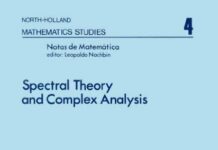
Ebook Info
- Published: 2014
- Number of pages: 332 pages
- Format: PDF
- File Size: 8.22 MB
- Authors: Author Unknown
Description
Congratulations to Ken Perlin for his 1997 Technical Achievement Award from the Academy of Motion Picture Arts and Science Board of Governors, given in recognition of the development of “Turbulence”, Perlin Noise, a technique discussed in this book which is used to produce natural appearing textures on computer-generated surfaces for motion picture visual effects. Dr. Perlin joins Darwyn Peachey (co-developer of RenderMan(R), also discussed in the book) in being honored with this prestigious award.* * Written at a usable level by the developers of the techniques* Serves as a source book for those writing rendering systems, shaders, and animations.* Discusses the design and implementation of noise functions.* Contains procedural modeling of gases, hypertextures, mountains, and landscapes.* Provides a toolbox of specific procedures and basic primitive functions for producing realistic images.* Procedures are presented in C code segments or in Renderman shading language. * 3.5″ disk contains the code from within the book for easy implementation
User’s Reviews
Reviews from Amazon users which were colected at the time this book was published on the website:
⭐Comprehensive and technical enough.
⭐The “new” Kindle version is terrible. The don’t even replicate the color plates in the original. Not even worth it to have a digital copy. Meh.
⭐This book has several serious problems.The most glaring is that a significant number of the examples are coded in the “Renderman shading language”. This language serves, in this book, to hide detail, detail specifically related to producing textures. Of course, if you know the language, you’re fine – but most won’t know the language and so this is a grievous error.By way of welcome contrast, other examples in this same book are instead presented as C code fragments or functions. That’s just the ticket – using a broadly known, freely available, relatively low-level language with no recourse to unknown hidden graphics functionality is precisely the way to go when explaining ideas in the domain of those this book is intended to convey.The second problem is one of content. While being concise to the level of a math text is not desirable, this book contains a very sparse field of useful information considering the number of pages. The margins are too wide, the text too large, the form factor of the book too small, and the authors too wordy to possibly convey a good basis for texturing in general – it is a broad and fascinating field, touched only in the briefest and most unsatisfying manner by this book.I do take issue with the reviewer who complained about the exposition on how to make a brick texture; that area of the text, while it may be already quite familiar to many who are interested in texturing, contains precisely the level of detail that needs to pervade a book of this type, and detail about steps that underly critical basic texturing ideas. Without understanding those basic texturing tools, a novice misses the first step on the stairs and fall on their face. The problem is, this approach is not consistent for more complex ideas in this volume, few as those actually are.The book is entitled “Texturing and Modeling”. While there is a moderate amount of texturing information in it, whatever you do, don’t get it if modeling is your goal. It is very nearly devoid of modeling information, and what there is (smoke, a planet simulation, a few other items) is very basic indeed.Finally, as a general critique, the authors (all of them) need to learn the basic idea that when presenting a function in any language to a new audience, one should precisely define the domain (and rationale) of the inputs and outputs of the function. As an example, one might encode the function for Perlin noise, and have no idea whatsoever as to what values to feed it to get particular types of results. For those of us who can read and understand what the function is actually doing (which is esoteric, make no mistake about it) the answers will eventually be illuminated by careful study of the function. However, this is very advanced material, and I am absolutely certain that many readers will be unable to figure out how to effectively use this function without a great deal of trial and error. You can also read that as “wasting a great deal of their time.” That is because they won’t be learning anything that could not have been conveyed by the author(s) in a single short paragraph of domain information.In summary:The 2 stars is because I didn’t think this was a very good book. On the other hand, it is one of the very few books that deals with the subject at all, and for that reason, you should definitely own it if textures are an interest of yours.If you’re newly interested in textures, this will give you a basis for further exploration. It won’t give you a cookbook by any means.If you’re looking for cookbook and “how to” approaches, get on the web and the newsgroups.Finally, if you’re considering writing a good book about creating textures, by all means, please do. The world needs a good one: this most definitely isn’t it. I’d be delighted to be one of the first owners of your new book.
⭐I’m using this book because I use a shading programing (shaderlab pro 2)language for truespace that is derivitive of renderman. In that sense it was helpfull becuase it filled in the gaps of the poor docs that came with shaderlab. It took me from scratch to a basic understanding of procedural coding. Oddly, the one thing it didn’t include that I assumed would be there was a discussion of the worelynoise function and feature points. This was totally strange because one of the authors was worely! Even stranger was that “advanced renderman” did do a decent discussion of it, so now I’ll have to buy that! Some people might want to check out “advanced renderman” because it’s less intense mathematically and gives more basic insight to renderman usage.
⭐Unless you are a complete novice to the subject, I would avoid this book. These so called ‘gurus’ merely give some of the ideas they have had for making procedural textures, and suggest what you could potentially do. Then they go into great detail on subjects like beveling a brick texture! Not useful. You WONT find explict texture recipes. You WONT learn how to code a texture engine (like Bryce uses for example). There is little you cant find on the web. If this book were [less expensive] I might be singing a different tune…
⭐Okay, the content of the book was excelent. My question was why did not the authors of the book have a some executables on the CD. If someone has found a way to compile the source then please send me a copy or info on how you did it. thanks. contact: kaber0111@hotmail.com
⭐This book covers all of the CG aspects needed to code material and texture applications. Many commercial CG softwares are using the essential theory and practice given in this book. This book seems as if the compilation of the best Siggraph papers of the pionering researchers of the subject.If you need to learn the procedural textures and materials: this is THE book.
Keywords
Free Download Texturing and Modeling: A Procedural Approach (The Morgan Kaufmann Series in Computer Graphics) in PDF format
Texturing and Modeling: A Procedural Approach (The Morgan Kaufmann Series in Computer Graphics) PDF Free Download
Download Texturing and Modeling: A Procedural Approach (The Morgan Kaufmann Series in Computer Graphics) 2014 PDF Free
Texturing and Modeling: A Procedural Approach (The Morgan Kaufmann Series in Computer Graphics) 2014 PDF Free Download
Download Texturing and Modeling: A Procedural Approach (The Morgan Kaufmann Series in Computer Graphics) PDF
Free Download Ebook Texturing and Modeling: A Procedural Approach (The Morgan Kaufmann Series in Computer Graphics)





